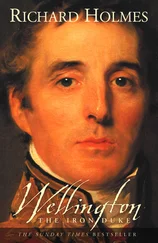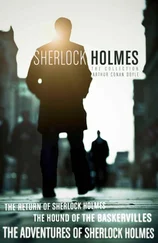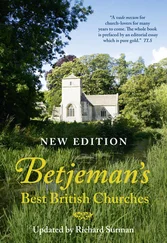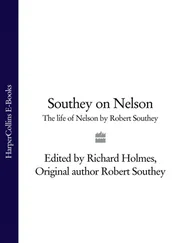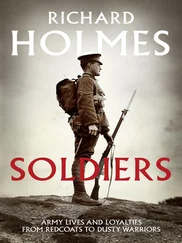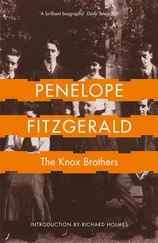The ordinary soldier, however, had little choice but to follow his regiment wherever it was posted. In 1839, Private Charles Goodward (whose stocky build gave him the nickname ‘Tubb’) arrived in India to join HM’s 16th Lancers, a regiment which had already been there for sixteen years and seemed likely to stay a good deal longer.
It was a disappointment … felt by the Regiment … after all our hopes … of our near return to dear … old England to find … that yet another campaign was in store for us … when at last orders from the Governor-General were read to us, stating that in the present state of the Country he could not deem it expedient to send the 16th Lancers home. 11
Although these three categories of soldier were organisationally distinct, there was a good deal of migration between them. James Skinner started his military career as a mercenary and died a British officer, while Captain Felix Smith, late of HM’s 36th Regiment, was mortally wounded under the command of one of the most remarkable of all the soldiers of fortune, George Thomas, a Tipperarian who had probably deserted from the Royal Navy and went on to establish his own state, ruled from his eponymously named fortress, Georgegarh. Some British soldiers were persuaded, by a substantial bounty, to transfer from HM’s service to the Company’s when their regiments left India. Conversely, the so-called ‘White Mutiny’ of 1859–61 arose when soldiers in the Company’s service declined to consider themselves re-enlisted into the British army when the Crown assumed full responsibility for India. Henry Havelock was a British officer but spent almost all his career in India; Frederick Roberts was a Bengal artilleryman who won his Victoria Cross in suppressing the Indian Mutiny and met his end, a field marshal and a peer, on the Western Front in 1914.
For most of this period, British people living in India spoke of themselves as Anglo-Indian, but the term has now generally come to refer to people of mixed race, or Eurasians. These folk were karani-log to native Indians, and Walter Lawrence observed that in his time ‘they are no longer called Eurasians but “Anglo-Indians” … I fear that the change of name will not improve the lot of this luckless and unprotected people’, squeezed in the vice between two cultures, fully trusted by neither side, and mocked for their use of English. Even the otherwise generous Lawrence noted that ‘I heard a mother saying of her two daughters: “She is a dull, and she is a naughty’”. 12The term ‘half caste’ went from being a blunt description to an insult. Andrew, one of Sir John Bennet Hearsey’s mixed-race children, horse-whipped the editor of The Pioneer for publishing an article by none other than the young Kipling, in which he was thus described. ‘It is false,’ yelled Hearsey;
I will have my proper people treated with proper respect, and called by their proper name, and that is Anglo-Indians. The descendants of the Saxons and British were called Anglo-Saxons, their descendants with the Normans were called Anglo-Normans, and we are therefore Anglo-Indians. 13
The change in status of the Anglo-Indian owed much to a wider change in attitudes that separated Georgian gentlemen, who often raised their mixed-race children with pride, from the Victorians who were much more sniffy about such things. Matters were hardly helped when, in 1792, the Court of Directors of the Honourable East India Company decided to debar mixed-race men from its service. ‘No person, the son of a native Indian,’ ran its decree, ‘shall henceforth be appointed by this court to appointments in the Civil, Military or Marine Services of the company.’ Eventually mixed-race men were allowed to serve as bandsmen or farriers, but while Indians could serve as native officers, with ranks such as jemadar and subadar, combatant military service was closed to sons of the very frequent liaisons between British men and Indian women.
Perhaps the most outstanding mixed-race figure in British India was the aforementioned Lieutenant Colonel James Skinner, born in 1778, who was proud to acknowledge that:
My father was a native of Scotland, in the Company’s service; my mother was a Rajpootree, the daughter of a zamindar … who was taken prisoner at the age of fourteen … My father then an ensign into whose hands she fell, treated her with great kindness, and she bore him six children, three girls and three boys. The former were all married to gentlemen in the Company’s service; my elder brother, David, went to sea; I myself became a soldier, and my younger brother, Robert, followed my example. 14
Despite services of which any British officer might have been proud, there were constant difficulties over Skinner’s status, and when he was recommended for the Companionship of the Order of the Bath there were complaints that he did not, strictly speaking, hold a commission, but enjoyed only local rank. One of his many supporters observed that: ‘Out of the numerous individuals in Spain and Portugal to whom brevet commissions have been granted, name one who has done more to serve the state.’ 15The Court of Directors ruled in 1829 that:
Lieut-Colonel Skinner, holding from His Majesty the local rank of Lieut-Colonel in India, must necessarily entitle him to all the advantages arising from the possession of his commission; and, consequently, to take rank according to the date of it, with the officers of the King’s and our service … 16
James Skinner and his sons feature in these pages, and it would have been a very rash subordinate who withheld from them the title of sahib. If there are fewer mixed-race sahibs in these pages than there ought to be, you must blame the East India Company, not the author.
Although this is not a history of the Indian army, the story of the British soldier in India is so closely entwined with that of his Indian comrade in arms that I can draw no sharp distinctions: nor would I wish to. Though relations between British and Indian soldiers were never quite the same after the great Mutiny of 1857–58, on either side of this shocking and traumatic episode there were often close and cordial relations between British and Indian soldiers, and a sense of shared endeavour curls across the period like that most pervasive of Indian scents, the smoke from cow-dung fires. A stone in the little Pakistani town of Gilgit – where the Karakoram highway winds down from the Hunza valley and the Chinese border – pays tribute to the memory of Captain Claye Ross of the 14th Sikhs, killed near Korgah on 10 March 1895, and also ‘to that of 45 brave Sikhs who were killed at the same time’. Although the abundant source material enables me to do justice to the British soldiers who served in India, neither the available records nor my own linguistic limitations enable me to write with such confidence about Jack Sepoy. 17
First to last there was something wholly distinctive about soldiering in India. To some it became a passion verging on the obsessional, far less to do with big ideas such as ‘Empire’ than a compelling personal involvement in the big bright caravanserai of an army that was entirely sui generis, never more or less than Anglo-Indian. Ensign William Hodson, a clergyman’s son and, unusually for the age, a university graduate, saw the pre-Mutiny army in all its ancient splendour as he moved up to his first battle, Mudki, in December 1845:
I wonder more every day at the ease and magnitude of the arrangements, and the varied and interesting picture continually before our eyes. Soon after 4 a.m. the bugle sounds the reveille and the whole mass is astir at once. The smoke of the evening fires has by this time blown away and everything stands out clear and defined in the bright moonlight. The sepoys bring the straw from their tents and make fires to warm their black faces on all sides and the groups of swarthy redcoats stooping over the blaze with a white background of canvas and the dark clear sky behind all produces a most picturesque effect as one turns out into the cold. The multitude of camels, horses and elephants, in all imaginable groups and positions – the groans and cries of the former as they stoop and kneel for their burdens, the neighing of the hundreds of horses mingling with the shouts of the innumerable servants and their masters’ calls, the bleating of the sheep and goats, and, louder than all, the shrill screams of the Hindoo women, almost bedevil one’s senses as one treads one’s way through the canvas streets and squares to the place where the regiment assembles outside the camp.
Читать дальше

